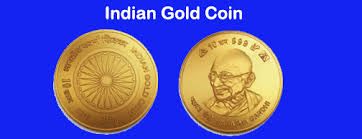How to give India’s gold a better glow yet make it part of a “Make in India” movement
You can download the full report from here:
Gold is one of the oldest industries in India employing almost 3.5 million people.
But its growth and employment potential could get adversely affected if two things don’t happen :
(i) adoption of good manufacturing and trade practices,
(ii) the ability of the government to bring hidden gold into the economic mainstream.
Gold has always fascinated man. Whether as ornament, or as part of royal or priestly vestments, or merely as another form of money. Gold has held its allure.
In India, as in China and a few other countries in the Middle East, gold has often been considered as auspicious. Each family must own some gold. Whether it is at the time of marriage, or childbirth, or circumcision, or even as something that must be purchased on
auspicious days like Akshay Treteya, gold has assumed a
significant position in the lives of most Indians.
Not surprisingly, India has embraced gold through centuries – as investment, as a hedge against inflation, as something sacred that households must have. If the family cannot afford gold, it opts for the next best – silver. That is why silver is often referred to
as the poor man’s gold.
Each person – as he starts his or her own family – must try add to the gold that he or she has inherited from the previous generation.
This is what Indian goldsmiths do. They do not normally hedge gold. If a family has one kilo of gold, all use of gold for making jewellery must promptly be replenished with fresh purchases, yet ensuring that the metal sold is always at a higher price than the current price at which it is purchased.
Thus the little reserve of gold that goldsmiths have is seldom financed by debt. They lend money. But they do not borrow money, except in times of crisis.
The concept of hedging is relevant to mitigate risk. The Indian goldsmith has collected gold without taking on any risk – except that of theft or plunder, and government legislation.
And as India’s population grew, the number of families that wanted to own a bit of gold kept increasing. Today estimates of gold ownership in private hands put this figure at 20,000-25,000 tonnes. But talk to those who know of business families who lock up huge amounts of gold in their private vaults at home, the figure talked about is closer to 100,000 tonnes!
For decades, governments have pondered over schemes that could help bring some of this privately hoarded gold into economic activity. But they mostly failed because of several reasons.
First, for almost six decades, gold was treated as a commodity, hence managed by the ministry of consumer affairs. It is only during the last decade that gold has been treated as an investment – albeit a non-financial investment like land and real estate. There is an urgent need to treat gold as a financial investment.
Second, most governments have looked to high net worth individuals (HNIs) and temple trusts for garnering gold deposits.
But a larger amount is held by small-income families. If the government is serious about bringing private (unregistered and largely unknown) gold into the economic mainstream, it must learn to tap the small-income families first.
Finally, the government needs to enforce honesty and fair trading practices among people who practice the gold trade in India. Unless this is done, India’s reputation as an exporter will continue to plummet.
Together, these three measures can revitalise the gold industry and can even strengthen the Indian economy












































COMMENTS